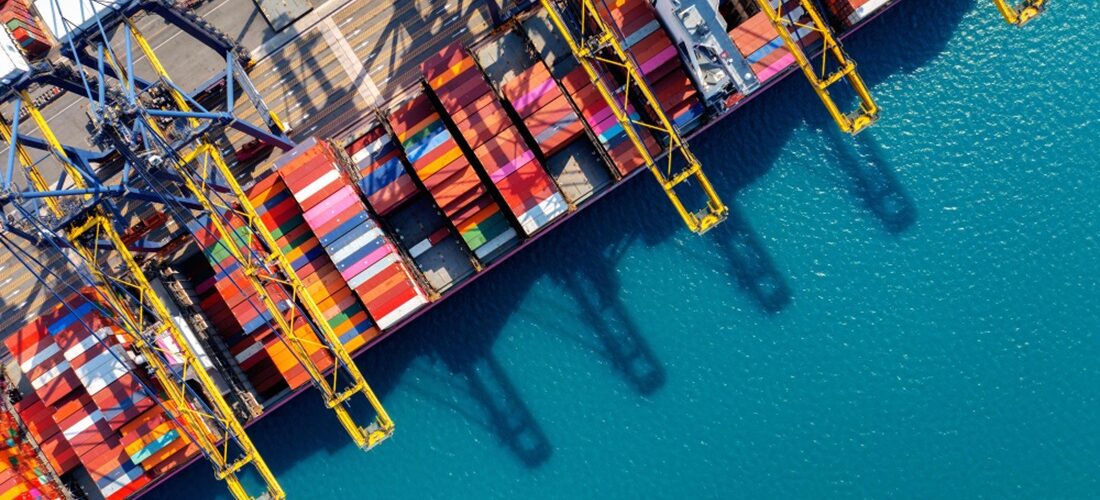
CNT Study Reveals Bottlenecks and Solutions for Brazilian Ports
Dec, 19, 2023 Posted by Gabriel MalheirosWeek 202345
Inadequate access infrastructure, legal uncertainties, and bureaucracy stand out as primary issues affecting the efficiency of both public ports and private-use terminals (TUPs) engaged in import and export activities in Brazil. This is the finding of a comprehensive study titled “Brazilian Cargo Terminals – Port Gateways,” released by the National Confederation of Transport (CNT).
The 231-page document thoroughly maps all areas of the productive chain in the sector, focusing on gateways—port facilities handling long-haul cargo. The study analyzed 12 port assets, comprising six organized ports and six TUPs.
Santos, alongside the port complex of Rio de Janeiro, Paranaguá, Rio Grande, Itaqui, and Vila do Conde, represents the organized ports in the research. TUPs include Terminal de Tubarão, Terminal Aquaviário de Angra dos Reis, Porto do Açu, Portocel, Portonave, and Terminal de Ponta da Madeira.
According to CNT, these 12 port facilities collectively account for around 64% of total long-haul cargo movement in Brazil over the past two years. They are considered key port gateways based on cargo movements, profiles, and regional significance.
The main commodities handled by these port facilities were iron ore, containers, and soy, with Santos and Paranaguá driving container movements and the Terminal Marítimo de Ponta da Madeira (MA) and Terminal de Tubarão (ES) predominantly handling bulk solids.
The study provides a general characterization of port terminals dedicated to the movement of goods to and from other countries. Brazil has a total of 235 port facilities, including public and private maritime or river terminals. Out of these, 96 (41%) handled long-haul cargo in 2022, with 28 being organized ports (leaseholders) and 68 TUPs (licensees), according to data from the National Waterway Transportation Agency (Antaq).
The CNT further states that, based on Antaq’s statistical yearbook, while organized ports handled approximately 422 million tons of goods last year, TUPs reached around 786 million tons.
To Improve
CNT’s Executive Director, Bruno Batista, stated that the study aims to draw attention to the potential for improvement in cargo movement.
“We identified the difficulty of maintaining a quality level in access and the lack of coordination between public agencies in managing TUPs and organized ports.”
The research identifies six bottlenecks and proposes solutions based on literature reviews and questionnaires answered by terminal operators and representatives of the Brazilian Ports Terminals Association (ABTP) and the Association of Private Ports Terminals (ATP).
“Our second goal is to, by disseminating these problems and proposed solutions, send this material to the Ministry of Ports and Airports (MPor),” said Batista.
He also commented that there is a need to strengthen ties between public agencies, port administrations, and operators, as “distance is a fertile ground for bureaucracy.”
CAPs
CNT’s Executive Director also advocates for more autonomy for the Port Authority Councils (CAPs). “Valuing the CAPs would be very good for solving problems. We need to make CAPs once again have a deliberative function.”
Batista also pointed out the need for multimodality for logistical efficiency. “Cargo has a specific vocation, depending on its nature and the necessary movement distance. We need to build options so that the market defines the most advantageous, agile logistical path, balancing the costs that each chain can bear.”
He said the study will also be presented to the National Congress. “We believe that a broad mobilization, showing the urgency to address the identified problems, is vital at this moment.”
Associations
ATP President Murillo Barbosa stated that this is a demand that ATP has been coordinating with CNT for about four years. “ATP was heard, contributed to the content, and indicated terminals for this first work. A second work, the Domestic Gateway Terminals, is still pending, likely to be completed by 2025. It is a very positive, informative, and important tool for the national port sector,” Barbosa concluded.
-
Ports and Terminals
Aug, 26, 2020
0
Santos Port Authority reports 12% net revenue growth in second quarter
-
Shipping
Feb, 11, 2020
0
MSC service linking Chile to Europe returns to Valparaiso with two calls a week
-
Ports and Terminals
Apr, 25, 2024
0
Paranaguá Port Sets 100 Tons of Soybeans Handled Per Minute Record
-
Shipping
Nov, 04, 2021
0
Hidrovias do Brasil did not sail in October due to the water crisis, but expects improvement



